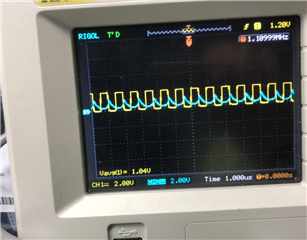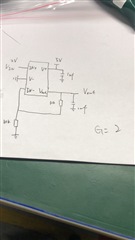Other Parts Discussed in Thread: TLV9051, OPA2992
Hi Team,
the spec of LM321LV show the Gain-bandwidth Frequency is 1MHz, but in my customer testing circuit the distorted frequency is up to 100KHz. Could you pls help provided any solution to solve it or provided you Gain-bandwidth testing circuit? Thanks!
1MHz distorted curve. Yellow input curve, blue output curve.

Testing circuit.



